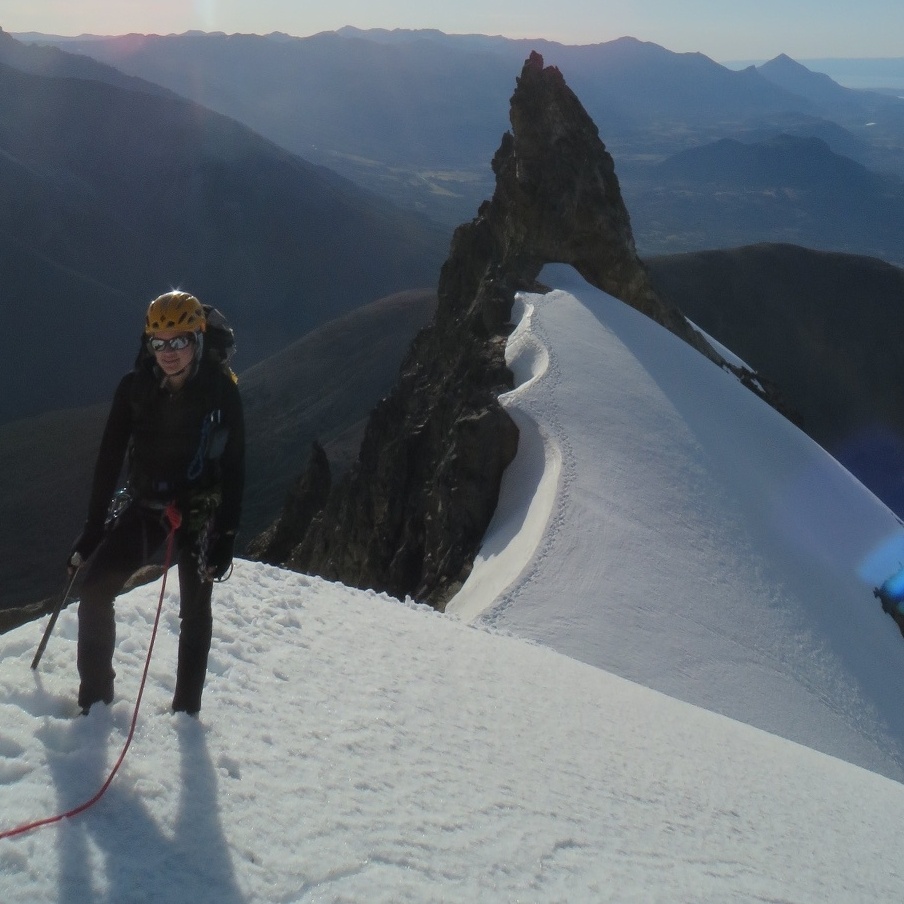… Perhaps when I say the word Patagonia, most of you will think of legendary places like el Chaltén or Torres del Paine, but here is the difference, my Patagonia is a land unknown to many and familiar to few. Yes, that is what I speak of, of that land that still has magical air to explore, that which hides in maps without information, mountains without name and routes that definitely do not exist.
… Posiblemente cuando pronuncio la palabra Patagonia la mayoría de ustedes estará pensando en lugares míticos como el Chaltén o las Torres del Paine, pero he aquí la diferencia, mi Patagonia es una tierra desconocida para muchos y familiar para pocos. Si, a eso es lo que me refiero, a esa tierra que todavía tiene aires mágicos para explorar, aquella que se esconde en mapas sin información, cerros sin nombre y senderos que definitivamente no existen.
- Pedro Binfa
Patagonia has been a dream destination for much of my life, existing in images of sheer granite cliffs and stories of punishing weather in remote, wild terrain. The privilege of developing close friendships with Chilean co-instructors at NOLS Alaska over the years, an invitation to a December expedition to San Lorenzo, a September co-instructor’s cry of, “You found a round trip ticket to Santiago for under a grand, and you didn’t buy it?!”, and an expedition grant from the NOLS Instructor Development Fund came together to place me in the Aysén region of Patagonia for five weeks this December.
Parte Uno – San Lorenzo
I teamed up with fellow NOLS instructor Martin Arteaga and NOLS alumnus Morgan Urquia to attempt to climb Patagonia’s second tallest peak, Cerro San Lorenzo (3,706 meters/12,158 feet). We spent a day and a night in the small town of Cochrane preparing gear, purchasing rations, and drinking cafecito, then embarked on a five-day expedition to the Calluqueo Glacier.
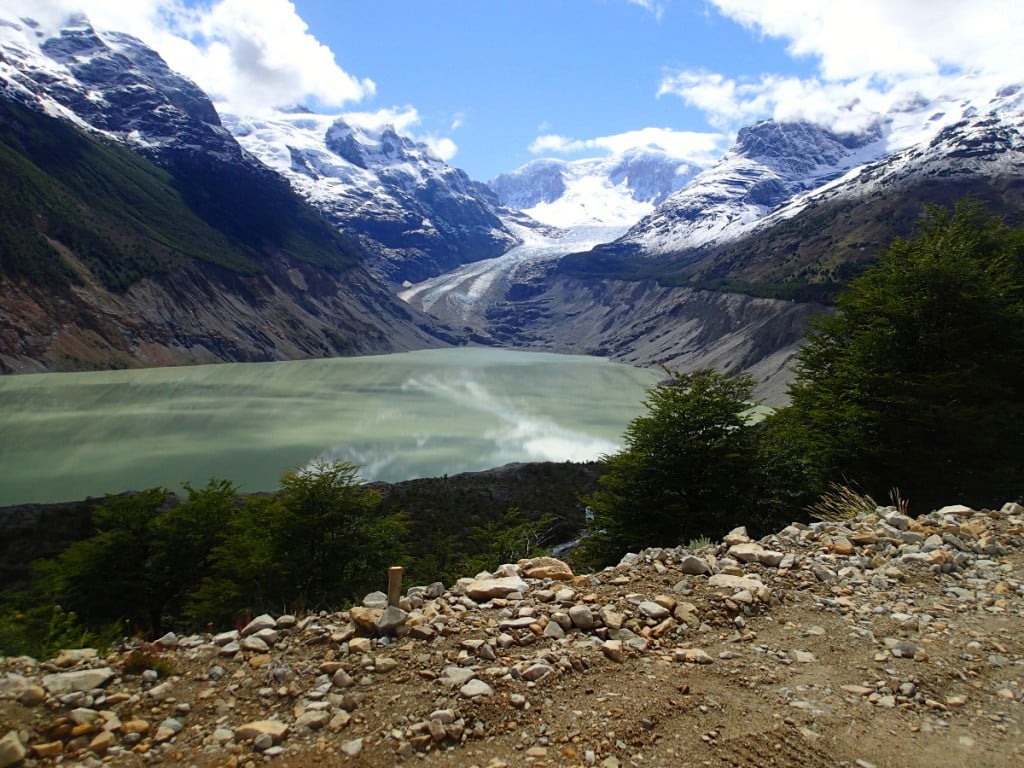
Lago Calluqueo, in front of the San Lorenzo massif. Photo by Marissa Bieger.
In the realm of Patagonian bushwhacking, our approach was kind to us, and we were able to access the glacier on our second day. The bare glacier of the Calluqueo is extremely cracked and challenging to navigate, so we scouted and fixed a line to access easier terrain, making camp on a nunatak (an exposed rock island surrounded by glacier) and preparing for an alpine start the next morning to attempt the long summit journey.
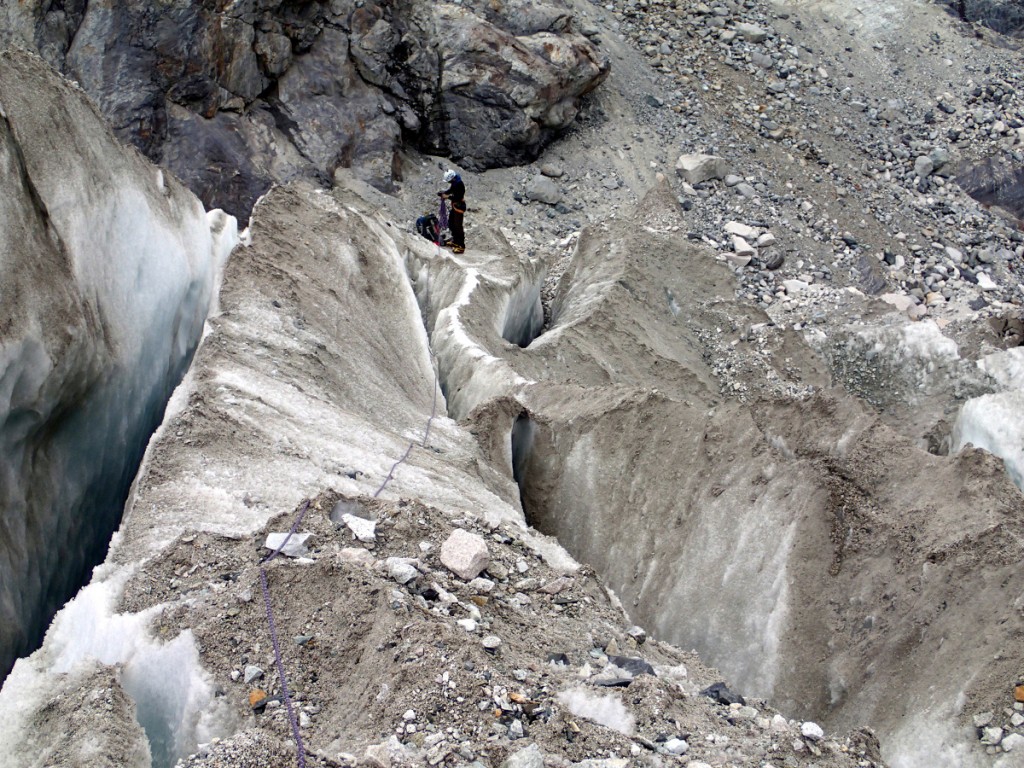
Martin securing a fixed line to access the Calluqueo Glacier. Photo by Marissa Bieger.
Our weather looked marginal in the morning, but Patagonian weather is known for its fickle temperament, with storms moving extremely fast and weather windows few and far between. We roped up and attempted to ascend the icefall, watching weather close in around us and wind load the snow slopes above. After drinking an alpine mate tea in the shelter of some boulders, we decided to turn back due to unstable snow conditions and the risk of being trapped by a storm on the ridge. Unfortunately, the weather window never opened on San Lorenzo during our attempt. Until next time …
Parte Dos – Cerro Cremilda
I traveled to Chile with loose plans for the beginning and end of my trip, but stretched my tolerance for uncertainty and adversity by leaving the middle unplanned and without partners. Luckily, shortly after arriving in Coyhaique where NOLS Patagonia is based, I met instructor Marcelo Mascareño, with whom I shared many mutual friends and a lack of holiday climbing plans.
Just after Christmas celebrations at the NOLS campo (campus), we teamed up to explore a once-before-climbed tower not far from San Lorenzo. Our journey provided ample obstacles and laughs: broken windshield wipers in the driving rain on the dirt Carretera Austral (one of Chile's remote highways), washed-out access roads, friends locked out of their own bedroom, and an automobile river crossing to rival anything I’ve done on a NOLS course!
In the end, we made it to the campo of Lucy Gómez and Luis Soto for a wonderful evening of hospitality and a festival to celebrate the marking of the sheep, and also to the campo of Señora Cremilda de la Cruz, from where we left for the mountains. Both of these families often host NOLS Patagonia students during the cultural sections of their courses.
The approach was a climbers’ dream: six hours on well-traveled cow and horse trails to the foot of a glacial moraine, providing access to a cirque of steep towers, most of which were unclimbed. Our original objective proved to require more days than we had, so we turned our eyes to a beautiful peak across the valley for the next morning. The climbing was incredible – todo mixto, or mixed terrain – roped glacier travel, steep snow climbing, and loose fourth- and fifth-class rock to the summit. After naming the peak for Señora Cremilda, we descended for a late dinner and an alpine start to make it back to Coyhaique for a night of dancing to celebrate the año nuevo.
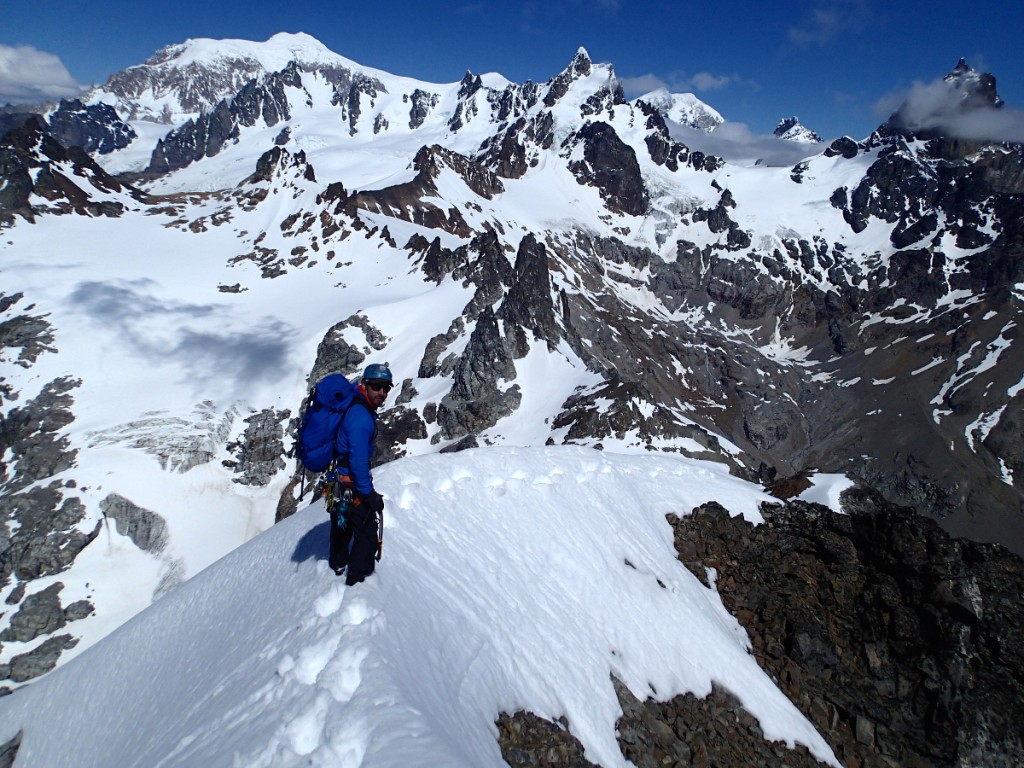
Marcelo descending from the summit of Cerro Cremilda. Photo by Marissa Bieger.
Parte Tres – Reserva Nacional Cerro Castillo
For my last week, I reunited with friend and NOLS instructor Pedro Binfa to spend five days climbing as much new terrain as we could in his favorite alpine playground, Cerro Castillo. Castillo is a climber’s paradise: convenient camping, easy access, and what seems like infinite new lines to explore.
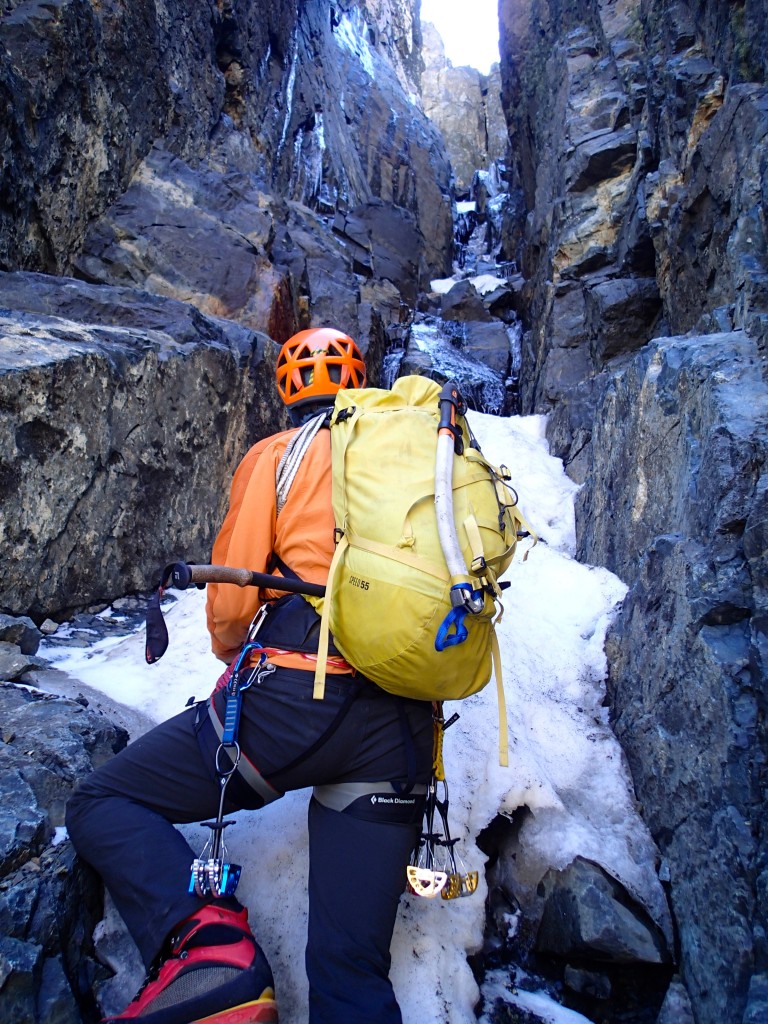
Pedro on “Las Vueltas de la Vida,” Cerro Sahne Nuss. Photo by Marissa Bieger.
We established a new route on Cerro Sahne Nuss called “Las Vueltas de la Vida” (300 meters/984 feet, 5.8 M1), a wandering rock route with one pitch of mixed ice. The weather was tremendous and allowed for more climbing, so we spent two days attempting a new route on the east face of Cerro Castillo. We climbed 50-degree snow to access a high bivouac ledge for the night, and explored six pitches of good quality rock before turning back due to increasing difficulty and lack of time. As a consolation, we climbed a small tower that I named Cerro Tábano, for the persistence of the tábano flies in following us up a glacier in order to deliver me a bite while belaying Pedro on the descent.
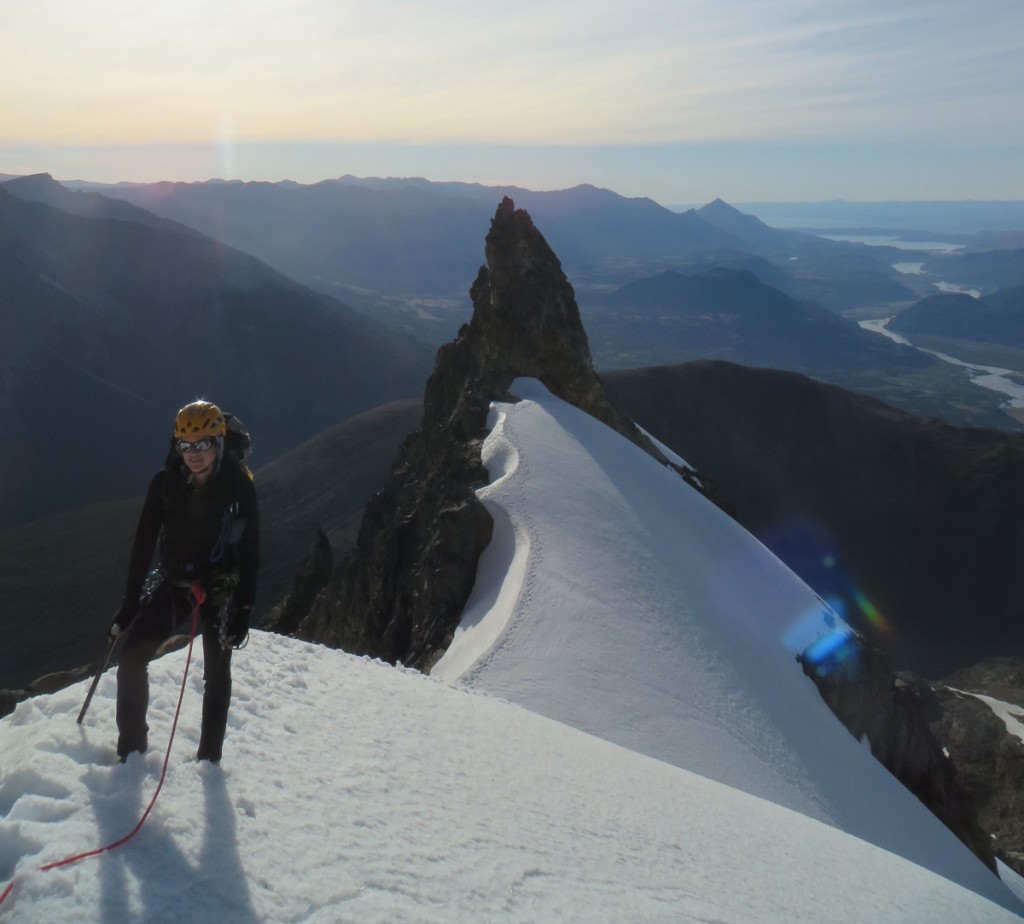
Marissa approaching the East Face of Cerro Castillo, with Cerro Tábano behind. Photo by Pedro Binfa.
The varied terrain I was able to access on these three expeditions gave me an incredible first insight to mountaineering in Patagonia. The Aysén region provides tremendous options for our course areas, from large glacier expeditions with heavy loads reminiscent of Alaska, to steep and dynamic mixed rock, ice, and snow that bring back memories of the Cascades.
As a NOLS instructor, I hope to work mountaineering courses at this location in the future, and find it invaluable to have personal experiences like these to share with my students. Making quick judgments to mitigate risk in changing terrain, practicing these techniques in situations of real consequence, and pushing my comfort in technical terrain directly increase my competence in managing students in those environments.
This expedition could not have happened without the generosity of NOLS Patagonia, the NOLS Instructor Development Fund, Intuition Liners, Club Alemán Andino – DAV, Lucy Gómez and Luis Soto, and Cremilda de la Cruz.
¡Gracias a todos!
- Leadership Skills
- Nols Patagonia
- Climbing
- Educators Notebook
- Becoming An Instructor
- Mountaineering
- Education


